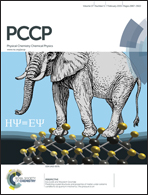Constrained control landscape for population transfer in a two-level system
Abstract
The growing success of controlling the dynamics of quantum systems has been ascribed to the favorable topology of the quantum control landscape, which represents the physical observable as a function of the control field. The landscape contains no suboptimal trapping extrema when reasonable physical assumptions are satisfied, including that no significant constraints are placed on the control resources. A topic of prime interest is understanding the effects of control field constraints on the apparent landscape topology, as constraints on control resources are inevitable in the laboratory. This work particularly explores the effects of constraining the control field fluence on the topology and features of the control landscape for pure-state population transfer in a two-level system through numerical simulations, where unit probability population transfer in the system is only accessible in the strong coupling regime within the model explored here. With the fluence and three phase variables used for optimization, no local optima are found on the landscape, although saddle features are widespread at low fluence values. Global landscape optima are found to exist at two disconnected regions of the fluence that possess distinct topologies and structures. Broad scale connected optimal level sets are found when the fluence is sufficiently large, while the connectivity is reduced as the fluence becomes more constrained. These results suggest that seeking optimal fields with constrained fluence or other resources may encounter complex landscape features, calling for sophisticated algorithms that can efficiently find optimal controls.


 Please wait while we load your content...
Please wait while we load your content...